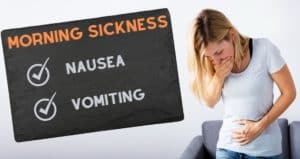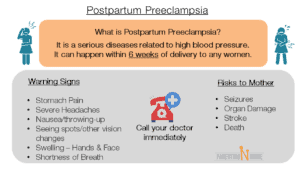-
Author: Palak Thakkar
- >> Post Created: September 27, 2020
- >> Last Updated: May 3, 2024
Medically Reviewed by: Dr. Veena Shinde (M.D, D.G.O, PG – Assisted Reproductive Technology (ART) from Warick, UK) Mumbai, India

Table of Contents - Sequential screening
As parents we are always worried about our baby’s health when they are growing. We take so many precautions to ensure our babies are safe and healthy.
But there is something we can do even before they are born to know whether our baby is growing healthily. One of the ways in which we can do that is through the sequential screening tests.
Sequential screening are a series of tests that are generally included in your first trimester screening and second trimester screening, all to know whether the baby has a risk of neural tube defects or genetic abnormalities like Down syndrome, trisomy 18, spina bifida, etc.
We are sharing everything you need to know about the sequential screening tests in this article to help you understand the procedure and the tests better.
What is sequential screening and how does it work?
Sequential screening, as the name suggests, is a sequence of tests that helps you determine whether your baby has a risk of any genetic abnormalities and neural tube defects.
Sequential screening involves an ultrasound and one blood test during the First trimester screening and another blood test during the second trimester.
When you are pregnant, there are many hormones and proteins that your growing baby will produce that can also be detected in your blood. Along with that, your body will also produce some additional hormones and proteins that enable you to support your baby’s growth.
If any of these hormones or proteins are present in abnormal levels, they can indicate some possible birth defects in your baby.
Even though sequential screening is a two-step process with one blood test and ultrasound conducted during the first trimester and a second blood test conducted during the second trimester. The final result for all these tests is given together in the second trimester. But if the first blood test result shows any abnormalities, you will be given the result immediately.
Read this next
Blood tests
Doctors will take two blood tests for sequential screening.
Blood test 1: It is conducted between weeks 11 and 13 of your pregnancy. In this test, the pregnancy-associated plasma protein A, i.e. , levels are measured in the blood. Low levels of PAPP-A in the first trimester can be linked to a higher risk of neural tube defects like spina bifida.
Blood test 2: It is conducted between weeks 15 and 18 of your pregnancy. But sometimes it has been performed as late as 21 weeks.

This blood test is conducted to measure the following components in the blood:
- Alpha-Fetoprotein (AFP): This protein is secreted by the baby’s liver that can also be detected in the bloodstream of the mother. Very high or very low levels of AFP can be associated with birth defects.
- Estriol (uE3): When a woman is pregnant, estriol is the hormone that is detected in the highest quantity in the woman’s blood. If this hormone is present at lower levels in the blood, then the baby is at an increased risk of being born with Down syndrome or trisomy 18.
- Beta-hCG: Human chorionic gonadotropin hormone (beta-hCG), which is also called the pregnancy hormone, is secreted by the placenta into the mother’s body. The levels of this hormone are lower in the second trimester as compared to the first trimester. Higher than normal levels of this hormone indicates a higher risk of Down syndrome, and lower than normal levels of this hormone indicates a higher risk of trisomy 18. To know more about this hormone refer to ‘hCG levels & Pregnancy—All you need to know’
- Inhibin: Although the exact role of this protein in pregnancy has not been understood yet, but it is known that testing for this protein increases the accuracy of the sequential screening. Similar to beta-hCG, higher than normal levels of this hormone indicates a higher risk of Down syndrome, and lower than normal levels of this hormone indicates a higher risk of trisomy 18.
Pregnancies that are affected with Down syndrome have lower than normal levels of PAPP-A, AFP, and uE3, whereas inhibin and beta-hCG are present in higher than normal levels.
Pregnancies that are affected with trisomy 18 have lower than normal levels of PAPP-A, AFP, uE3, inhibin, and beta-hCG.
Pregnancies that are affected with neural tube defects have higher than normal levels of AFP.
Ultrasound

The ultrasound conducted during the first trimester between weeks 11 and 13 of your pregnancy is also called the nuchal translucency.
The ultrasound machine sends sound waves that are reflected back at different wavelengths that are captured by the machine in the form of images. Through the images, the doctors check the nuchal translucency, i.e. back of the baby’s neck, which gets filled with fluid. The size of the back of the neck can indicate the presence of genetic abnormalities like Down syndrome.
Although this screening is not a definitive diagnosis for the birth defects, but it can help support the information from the blood tests to give a more accurate risk assessment.
It might happen that when you go for your ultrasound the baby might not be in a position for an effective screening. If this is the case, the doctor will probably ask you to come back for another try to conduct the ultrasound again.
Sequential screening tests results
Sequential screening tests results are a combination of the information the doctor gathers from the two blood tests, the ultrasound, and other factors like the maternal age to calculate the risk of the baby being born with genetic conditions.
If an egg donor was used to become pregnant, the donor’s age will be considered during the risk calculation instead of the mother.
If the results of the first part of the sequential screening, i.e. the blood test PAPP-A and the ultrasound for nuchal translucency, are indicating a lower risk of the baby being born with genetic abnormalities, then the second part of the sequential screening, i.e. the blood test for AFP, uE3, beta-hCG, and inhibin, will be conducted to confirm the results.
Deciphering the results of sequential screening
The results of the sequential screening tests can be positive or negative.
Positive tests results: A positive test result means your baby is at a higher risk of being born with genetic abnormalities and neural tube defects like Down syndrome, trisomy 18, spina bifida, etc.
About 1% of woman will show a positive test result after the first blood test itself. The doctor can confirm the results with the ultrasound and recommend a diagnostic test to know more about your baby’s condition.
The diagnostic tests can be either amniocentesis, where a sample is taken from the amniotic fluid, or chorionic villus sampling (CVS), where a sample is taken from the placenta.
If the first part tests results were negative the second trimester blood test is conducted to confirm the results. If the results are positive in the second blood test, the doctor may recommend genetic counselling along with diagnostic testing to confirm the results.
Even though the tests results are positive, remember that the sequential screening will only give a risk assessment of your baby being born with genetic abnormalities. You can only confirm the results of the abnormalities with diagnostic testing.
Negative tests results: A negative test result means your baby is at a lower risk of being born with genetic abnormalities and neural tube defects like Down syndrome, trisomy 18, spina bifida, etc.
But remember that the risk is lower, it is not zero. Your doctor will continue to monitor the progress of the baby throughout your pregnancy.
How accurate are the results?
The sequential screening tests cannot detect all genetic abnormalities. The accuracy mainly depends on the screening results and the skill of the doctor performing the nuchal translucency test.
The sequential screening tests accurately detect:
- 9 out of 10 cases of babies born with Down syndrome
- 8 out of 10 cases of babies born with spina bifida
- 8 out of 10 cases of babies born with trisomy 18
As sequential screening tests are only risk assessment tests, there is a chance of false positive and false negative results.
False positive results: The sequential screening tests are positive and means that your baby has a higher chance of being born with genetic conditions. But the baby is born without any genetic abnormalities or birth defects.
False negative results: The sequential screening tests results are negative and means that your baby is at a lower risk of being born with genetic conditions. But the baby is born with genetic abnormalities or birth defects.
Although false positive and false negative results are rare, but they do occur. Diagnostic tests can help confirm the results more accurately.
Combining the results from the first and the second trimester can give better and more accurate results than results from just the first part. Also, if only the first trimester tests are conducted, you will be not be able to assess the risk of neural tube defects, which can only be done with the tests conducted in the second trimester.
So sequential screening is more accurate and is also a noninvasive form of testing to help you detect your baby’s health even before they are born.
Final thoughts
The sequential screening tests are not mandatory but are definitely advised. But it is solely up to you and your partner whether you want to conduct sequential screening and know about any condition, if there is one, in advance.
But knowing about your baby’s condition beforehand can help you prepare in many ways.
- If the birth defect has been identified early, then it can be rectified with a potential intervention like the fetal surgery for spina bifida. You can help your baby to grow up without the defect.
- You are better prepared to manage a kid with special needs. You can start planning and reading about how to manage a child with special needs.
- A special needs child may need certain lifestyle changes from your end as well. Addressing these lifestyle changes can help you prepare in advance.
- You have to support the child, but you may also need support from time-to-time. Finding support groups in your area will help you understand your situation from parents who are already taking care of a child with the same condition.
- If you and your partner feel that maybe you are not equipped to support a child with special needs, knowing beforehand can also help you decide whether to carry the baby to full-term.
Getting the sequential screening done will give you a peace of mind if the results are negative or help you prepare appropriately if the results are positive.
Happy Preparing!










Every first time mothers should read this article:)
Well written and nicely articulated.
Keep-up the good work.
Thanks Laura.
I am glad you liked the post.